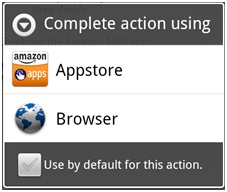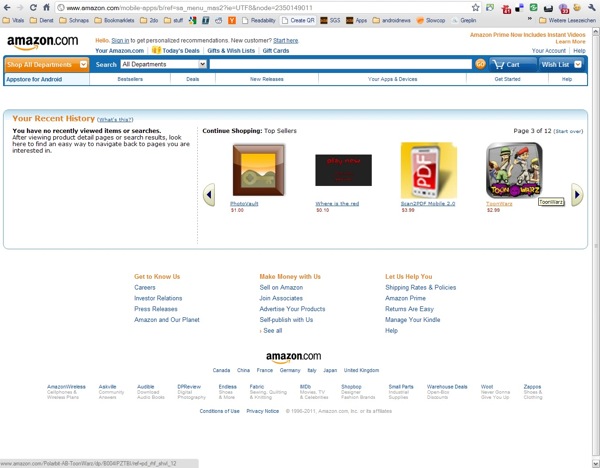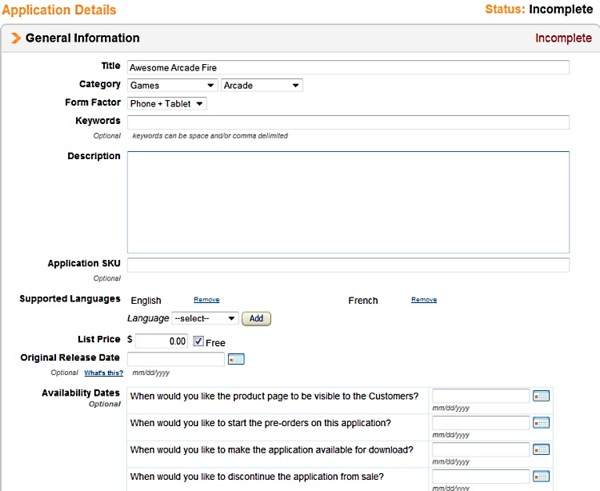 Aggregation and curation are seductive arts – they feel like they’re within anyone’s reach, they seem limited only by imagination and discerning taste and they can create a magical experience for audiences. The web is filled with people who think they can create new aggregation services that people will love – and in many cases those people are right. Aggregation can be awesome.
Aggregation and curation are seductive arts – they feel like they’re within anyone’s reach, they seem limited only by imagination and discerning taste and they can create a magical experience for audiences. The web is filled with people who think they can create new aggregation services that people will love – and in many cases those people are right. Aggregation can be awesome.
Not everyone sees it that way, though – especially among the aggregated. Yesterday the popular but new iPad app Zite, which calls itself a Personalized Magazine, got a nasty Cease and Desist letter from 10 big media companies very unhappy with the way their original content was being aggregated. The companies said Zite is manipulating their content without their permission and stripping out the ads. Zite says it’s respecting what’s communicated in the code on pages it indexes and that it’s willing to change on request. The tone of the industry letter is so noxious that I was immediately sympathetic towards Zite, but looking at the details and talking to the CEO of competitor Flipboard makes me think maybe this trailblazing startup took things a little further than it should have. I don’t know, I’d like to know your opinion.
What Zite Does
When you download Zite to your iPad, you can let it learn about what topics you’re interested in from your Twitter, Google Reader or Delicious data. The app then creates a magazine-like interface for you to scroll through stories from a wide variety of sources online about those topics. You can give very specific feedback about what you like or don’t like and then you get more stories like that. It’s like Pandora for news articles. Not a lot of control but smart personalized learning. We reviewed the app in more detail yesterday and said that if you like Flipboard (Apple’s iPad App of the Year) then you should try Zite because it’s even easier to use.
Zite: Personalized Magazine for iPad from zite.com on Vimeo.
What the Lawyers Say
Yesterday Zite received a Cease and Desist letter signed by ten lawyers from big, big media companies: Time, The Washington Post, McClatchy, E.W. Scripps, Getty Images, National Geographic, Gannett, Dow Jones, Advanced Publications and the Associated Press.
Here are a few excerpts from that letter:
“By systematically reformatting, republishing and redistributing our original content on a mass commercial scale without our permission in your iPad application, Zite directly and adversely impacts our businesses. Your application takes the intelletual property of our companies, as well as the hard and sometimes dangerous work of tens of thousands of people. It depreives our websites of traffic and advertising revenue. We do not know your intentions, but your actions harm our companies and the broader media and news industry on which your application relies for its content…
“The Zite application is plainly unlawful. Among other things, it intentially and pervasively infringes on our copyrights by reformatting and republishing substantial portions (and in many cases, the entirety) of our articles and large-scale reproductions of our photographs and illustrations. Further, it misappropriates and infringes our trademarks and falsely implies our affiliateion by prominently featuring certain of our logos on your home screen. Zite uses our content for commercial purposes in a manner that the law prohibits absent agreemnts with each of us. We demand that you immediately cease and desist all such infringing use of our intellectual property, both copyright and trademark, in or in connection with the Zite iPad application.
“We encourage and support the development of new technologies that facilitate innovative uses of our content – but those uses must be subject to our advance consent.“
Emphasis on that last line was added by me – it so incredibly misses the point, I think. Technology innovations don’t ask permission of the incumbents first. If they did, they would never be born.
That’s my take on it, at least. Not everyone would agree with that, though.
What Flipboard Says
“Publishers are justifiably concerned with anyone showing entire articles minus ads,” Flipboard CEO and Twitter Board of Directors member Mike McCue told me last night via Twitter when I asked for his opinion about the Zite C&D. Flipboard looks from the outside a lot like Zite does and was named the iPad App of the Year by Apple last year.
“Better to partner with them and explore together. We’ve only displayed what publishers syndicate via RSS (including their ads, related links, etc). Sometimes full articles are used in RSS and sometimes it’s just 1 line of text. We always respect that…True you can’t partner with everyone. The best strategy is to ask ‘would a publisher be happy with how we are displaying their content?’”
Hopefully McCue is right and publishers are generally supportive of the way his company aggregates content. Flipboard is also much better funded and better known than Zite, a smaller company and easier target.
What Zite Says
What does Zite have to say for itself? For context, I asked the company if it respected partial vs. full RSS feeds. It turns out Zite doesn’t look at feeds at all. Ali Davar, CEO of Zite, offers the following:
We acquire our data via a web crawl rather than via RSS, so we do not currently take it into consideration. We already take steps to discern automatically what the publisher wishes in this regard (looking for a NO_ARCHIVE tag which indicates that they do not want search engines to serve up cached content), and we will look into using RSS as another potential clue in this regard.
First, some insight into how Zite works with content:
- Zite’s content comes from a web crawl, the same way content is aggregated in the indexes of search engines like Google and Bing.
- Zite displays articles in reading mode, which changes how the page is rendered. Though we understand this can alter the layout and potentially eliminate ads, we made this design decision in order to give users a better reading experience. Reading mode is already common, e.g. Safari’s Reader.
- We respect the decision of publishers who either use the noarchive metatag or explicitly tell us they want their content displayed in web mode – in either case, we render articles without reformatting.
We don’t look at this as an adversarial situation. If the formal cease and desist we received from the big publishing companies yesterday was a one line email from the world’s smallest blogger, we would treat it exactly the same: we would switch the content from reading mode to web view mode. That’s it. This is not our legal position, it’s just our policy. Zite is eager to work with publishers in a way that benefits everyone – most importantly end users.
It’s good to know that Zite doesn’t look at this as an adversarial question, but the lawyers who sent the letters sure seem to. Is Zite’s approach fair? Will it satisfy publishers? Is it disingenuous for Zite to say what it is doing is comparable to search engines serving up cached content? Caches aren’t intended primarily as methods of consumption – but Zite’s copies are.
Are publishers shooting the future in the foot by objecting? Maybe they should applaud any technology that helps them grow their audience, that people love to use to read their content, even if some percentage of them don’t see the ads.
What do you think, readers?

 TweetDeck’s Web application, which made its Chrome Web Store debut back in December, has generally proved to be a worthy alternative to the TweetDeck AIR application for the desktop. However, up until today, the Web app only worked with Google’s Chrome Web browser. Now, says the company, TweetDeck is coming to all the major browsers, including Firefox, Safari, Internet Explorer and Opera.
TweetDeck’s Web application, which made its Chrome Web Store debut back in December, has generally proved to be a worthy alternative to the TweetDeck AIR application for the desktop. However, up until today, the Web app only worked with Google’s Chrome Web browser. Now, says the company, TweetDeck is coming to all the major browsers, including Firefox, Safari, Internet Explorer and Opera.


 Aggregation and curation are seductive arts – they feel like they’re within anyone’s reach, they seem limited only by imagination and discerning taste and they can create a magical experience for audiences. The web is filled with people who think they can create new aggregation services that people will love – and in many cases those people are right. Aggregation can be awesome.
Aggregation and curation are seductive arts – they feel like they’re within anyone’s reach, they seem limited only by imagination and discerning taste and they can create a magical experience for audiences. The web is filled with people who think they can create new aggregation services that people will love – and in many cases those people are right. Aggregation can be awesome. “
“ Amazon may be launching its Android App Store tomorrow, according to a new report, just in time to kick off this week’s CTIA Wireless 2011 conference in Orlando, Florida. An unnamed “trusted source” told
Amazon may be launching its Android App Store tomorrow, according to a new report, just in time to kick off this week’s CTIA Wireless 2011 conference in Orlando, Florida. An unnamed “trusted source” told 




 Back in January I
Back in January I